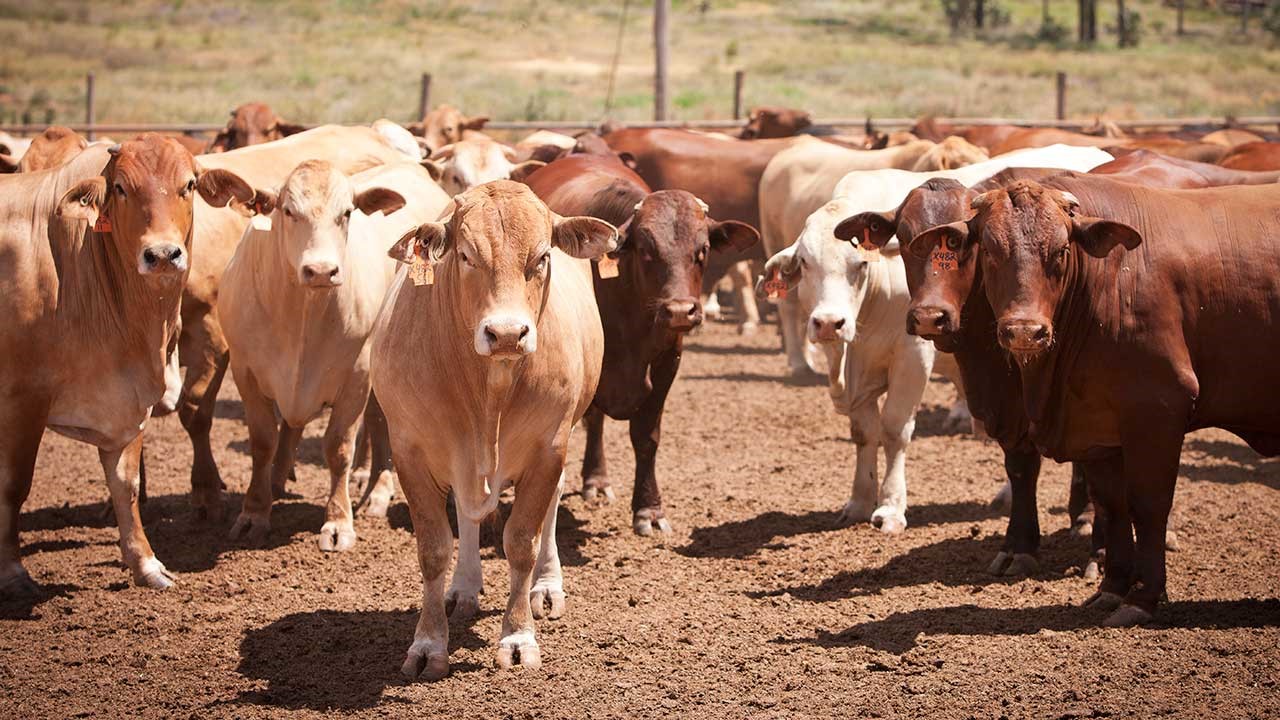Taking advantage of the Power of Constance Cattle: Optimizing Efficiency and Return on Your Farm
Taking advantage of the Power of Constance Cattle: Optimizing Efficiency and Return on Your Farm
Blog Article
Master the Art of Cooking With Grass Fed Meat
In the realm of cooking know-how, understanding the art of cooking with grass-fed meat holds a prominent setting. From the tender texture to the durable taste profile, grass-fed meat provides a canvas for cooking imagination.
Benefits of Grass-Fed Meat

When choosing grass-fed meat, consumers can take advantage of its greater degrees of omega-3 fats and anti-oxidants contrasted to traditionally elevated meat. Constance Cattle. Omega-3 fats are crucial nutrients that sustain brain health and wellness, reduce swelling, and advertise heart health and wellness. Grass-fed meat is known to have up to five times extra omega-3 fatty acids than grain-fed meat, making it a much healthier selection for those seeking to enhance their consumption of these helpful fats
Along with omega-3 fats, grass-fed meat is likewise richer in antioxidants such as vitamins E and C, in addition to beta-carotene. Antioxidants play an essential role in protecting cells from damages brought on by totally free radicals, which can add to various chronic diseases and speed up aging. By choosing for grass-fed meat, customers can not only delight in a much more nutrient-dense and delicious protein resource but also sustain their general health and wellness and well-being.
Integrating grass-fed meat into your diet can be a basic yet effective means to improve your nutritional consumption and reap the advantages of omega-3 fatty acids and antioxidants that are naturally bountiful in this kind of meat.
Finest Cooking Approaches
Utilizing suitable food preparation techniques is vital to protect the nutrient profile and enhance the flavor of grass-fed meat. When cooking grass-fed meat, it is necessary to keep in mind that it is leaner than traditionally increased meat, making it a lot more vulnerable to drying if overcooked. To guarantee a juicy and savory end result, consider cooking grass-fed meat at a little reduced temperatures than you would certainly with grain-fed meat.
Grilling is a prominent method for cooking grass-fed meat as it permits excess fat to trickle away, preventing flare-ups that can cause charring. When barbecuing grass-fed meat, usage medium warmth and keep a close eye on it to protect against overcooking. One more terrific food preparation approach for grass-fed meat is pan-searing. This method helps seal in the juices and produce a tasty crust on the meat.
Slow cooking methods such as braising or stewing are likewise superb alternatives for tougher cuts of grass-fed meat, as they aid damage down the muscle fibers and tenderize the meat. Whichever cooking method you pick, bear in mind to allow grass-fed meat rest after preparing to permit the juices to redistribute, guaranteeing a damp and tender last meal.
Flavor Pairings and Seasonings
To boost the natural flavors of grass-fed meat, calculated taste pairings and spices play a crucial role in elevating the overall eating experience. Grass-fed meat has an abundant, distinctive taste that can be matched and improved by thoroughly picked ingredients.
Along with natural herbs, spices such as black pepper, garlic, and smoked paprika can further raise the taste profile of grass-fed meat recipes. These flavors offer an equilibrium of warm, sweetness, and smokiness that can enhance the general dining experience. When flavoring grass-fed meat, it is essential to make use of high-grade salt, like sea salt or Himalayan salt, to highlight the meat's flavors without including unnecessary chemicals or ingredients.
Storage Space and Taking Care Of Tips
Appropriate storage space and taking care of techniques are crucial for maintaining the quality and quality of grass-fed meat. When saving grass-fed meat, it is crucial to keep it cooled at temperatures below 40 ° F(4 ° C) to avoid microbial development and spoilage. To expand the meat's service life, take into consideration covering it snugly in parchment paper or butcher paper prior to placing it in a closed container or sealed plastic bag - Constance Cattle. Avoid keeping grass-fed meat near strong-smelling foods as it can soak up smells easily.
When taking care of grass-fed meat, it is necessary to practice great visit here hygiene to stop cross-contamination. Wash your hands completely prior to and after dealing with the meat, and make certain that all utensils and surfaces that come into call with the meat are cleaned and sterilized correctly. Additionally, use different reducing boards for meat and veggies to stay clear of bacterial transfer.

Top Grass-Fed Meat Recipes
When thinking about the best ways to enjoy the quality and freshness of grass-fed meat, discovering excellent recipes can raise your culinary experience. Grass-fed meat's rich flavor and leaner account provide themselves well to a selection of dishes that highlight the natural goodness of the meat.
If you remain in the state of mind for something lighter, a Grilled Grass-Fed Burger served with fresh toppings and a side of sweet potato fries is a delicious selection. In addition, a Herb-Crusted Grass-Fed Lamb ribs baked pop over here to excellence with a medley of natural herbs and breadcrumbs is a show-stopping dish for special occasions. These leading grass-fed meat dishes showcase the convenience and superior top quality of grass-fed meat, enabling you to appreciate its exceptional taste in different culinary developments.

Final Thought
Finally, understanding the art of food preparation with grass-fed meat supplies many benefits, consisting of enhanced dietary value and remarkable flavor. By making use of the very best cooking techniques, trying out flavor pairings and flavorings, and following correct storage and handling suggestions, you can develop tasty and nutritious meals. Attempt out some top grass-fed meat recipes to elevate your culinary abilities and enjoy the full capacity of this top quality active ingredient.
When cooking grass-fed meat, it is crucial to bear in mind that it is leaner than traditionally increased meat, making it much more prone to drying out if overcooked. To guarantee a juicy and tasty result, consider cooking grass-fed meat at somewhat lower temperature levels than you would with grain-fed meat.
When seasoning grass-fed meat, it is necessary to utilize premium salt, like sea salt or Himalayan salt, to bring out the meat's tastes without including unnecessary chemicals or ingredients.
Grass-fed meat's abundant taste and leaner profile provide themselves well to a try this out selection of meals that highlight the natural goodness of the meat. These top grass-fed meat dishes showcase the convenience and superior top quality of grass-fed meat, permitting you to enjoy its premium taste in numerous culinary productions.
Report this page